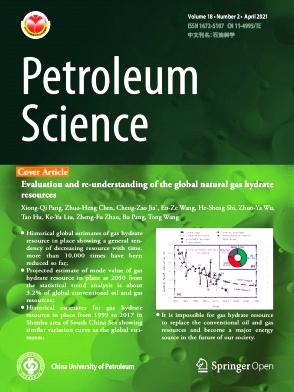城市地下空间液态沉积层对天然气爆炸特征及破坏风险的影响机制
IF 6.1
1区 工程技术
Q2 ENERGY & FUELS
引用次数: 0
摘要
瓦斯爆炸是城市发展过程中地下密闭空间的常见灾害。通常存在于这些环境中的液态沉积层,就其对爆炸动力学的影响而言,尚未得到充分的研究。本研究旨在探讨密闭地下空间气液两相环境对天然气爆炸特性的影响。为此,对天然气爆炸在水层和柴油层中的传播进行了实验研究,重点研究了液体性质和液体满度(Lx)对爆炸行为的影响。结果表明,与天然气条件相比,初始点火阶段后液体层的存在显著降低了峰值超压和压力上升速度。在随后的爆炸反应中,柴油表面的蒸发和燃烧导致柴油层的压力上升曲线呈现明显的双峰,且第二峰明显超过第一峰。在液态沉积层条件下,火焰传播速度范围为6.53 ~ 34.1 m/s,超压峰值范围为0.157 ~ 0.255 MPa。水层和柴油层环境下的爆炸持续时间大约是天然气层爆炸持续时间的两倍,尽管潜在的机制不同。在柴油层中,由于柴油的蒸发和燃烧,爆炸时间延长,而在水层中,火焰传播速度明显降低。在实验条件下,最大爆炸能量达到7.15 × 106 J,相当于1.7 TNT当量。超压峰值超过了超压标准规定的人类死亡阈值,对大型钢框架结构造成了潜在的破坏风险。在柴油层(Ld = 0%、5%、7.5%、12.5%)和水层(Lw = 12.5%)条件下,爆炸冲击波足以破坏抗震钢筋混凝土。研究了沉积物层厚度和组成对瓦斯爆炸的影响,并评估了相关爆炸能量,以评估地下环境下的人身伤害和结构破坏。研究结果为城市地下安全提供了科学参考。本文章由计算机程序翻译,如有差异,请以英文原文为准。
The influence mechanism of liquid sedimentary layers in urban underground spaces on the characteristics of natural gas explosions and damage risk
Gas explosions are a frequent hazard in underground confined spaces in the process of urban development. Liquid sedimentary layers, commonly present in these environments, have not been sufficiently studied in terms of their impact on explosion dynamics. This study aims to investigate how gas-liquid two-phase environments in confined underground spaces affect the explosion characteristics of natural gas. To achieve this, experiments are conducted to examine the propagation of natural gas explosions in water and diesel layers, focusing on the influence of liquid properties and the liquid fullness degree (Lx) on explosion behavior. The results indicate that the presence of a liquid layer after the initial ignition stage significantly attenuates both the peak overpressure and the rise speed of pressure, in comparison to the natural gas conditions. During the subsequent explosive reaction, the evaporation and combustion of the diesel surface resulted in a distinct double-peak pressure rise profile in the diesel layer, with the second peak notably exceeding the first peak. Under conditions with a liquid sedimentary layer, the flame propagation velocities range from 6.53 to 34.1 m/s, while the overpressure peaks vary between 0.157 and 0.255 MPa. The explosion duration in both the water and diesel layer environments is approximately twice as long as that of the natural gas explosion, although the underlying mechanisms differ. In the diesel layer, the prolonged explosion time is attributed to the evaporation and combustion of the diesel, while in the water layer, the flame propagation velocity is significantly reduced. Under the experimental conditions, the maximum explosion energy reached 7.15 × 106 J, corresponding to a TNT equivalent of 1.7. The peak overpressure surpassed the threshold for human fatality as defined by overpressure standards, posing a potential risk of damage to large steel-frame structures. The explosion shockwave in diesel layer conditions (Ld = 0%, 5%, 7.5%, 12.5%) and water layer (Lw = 12.5%) conditions is observed to be sufficient to damage earthquake-resistant reinforced concrete. This study investigates the impact of sediment layer thickness and composition on gas explosions, and evaluates the associated explosion energy to assess human injuries and structural damage in underground environments. The findings of this study provide a scientific reference for urban underground safety.
求助全文
通过发布文献求助,成功后即可免费获取论文全文。
去求助
来源期刊

Petroleum Science
地学-地球化学与地球物理
CiteScore
7.70
自引率
16.10%
发文量
311
审稿时长
63 days
期刊介绍:
Petroleum Science is the only English journal in China on petroleum science and technology that is intended for professionals engaged in petroleum science research and technical applications all over the world, as well as the managerial personnel of oil companies. It covers petroleum geology, petroleum geophysics, petroleum engineering, petrochemistry & chemical engineering, petroleum mechanics, and economic management. It aims to introduce the latest results in oil industry research in China, promote cooperation in petroleum science research between China and the rest of the world, and build a bridge for scientific communication between China and the world.
 求助内容:
求助内容: 应助结果提醒方式:
应助结果提醒方式:


